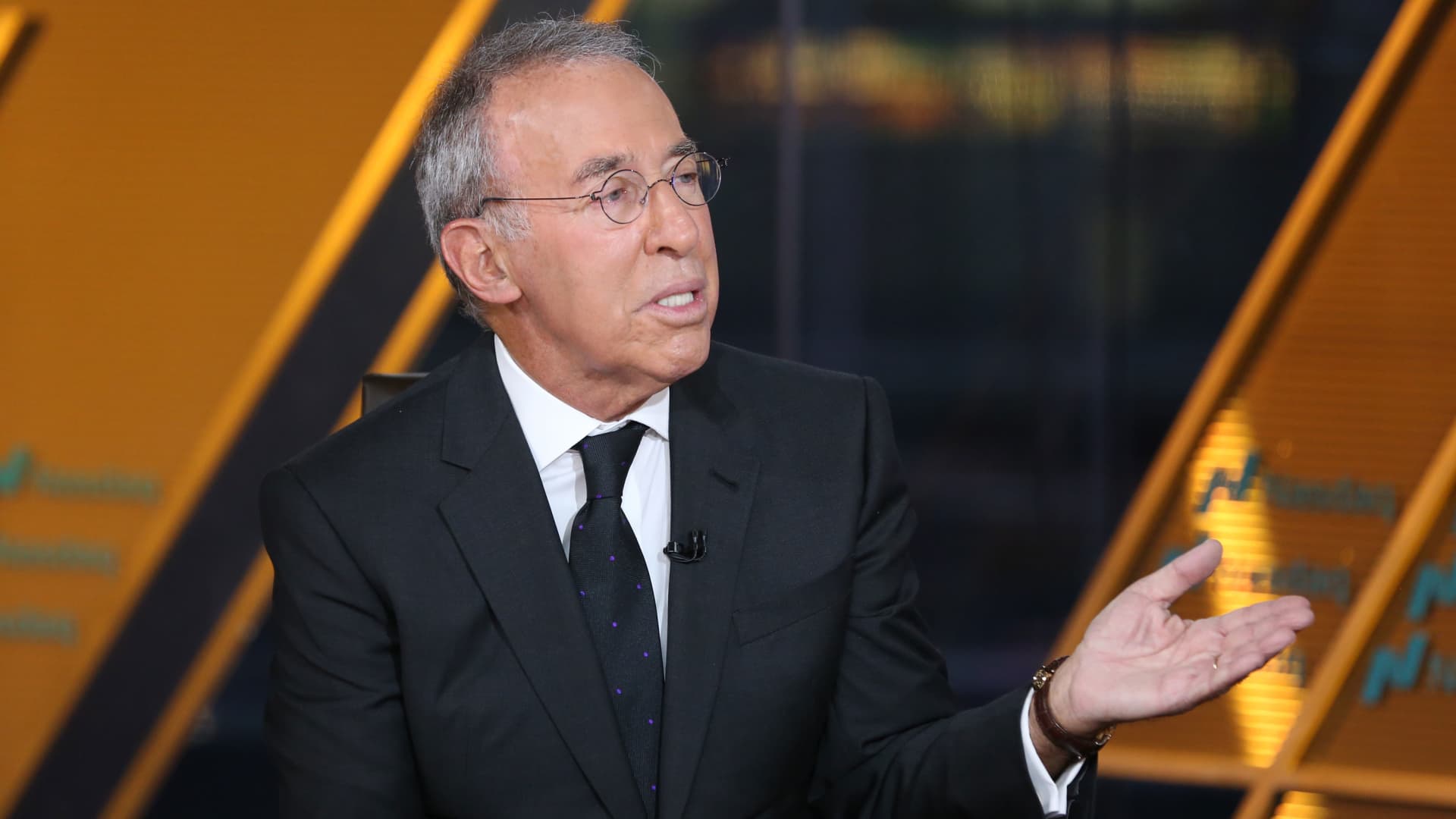‘Battered and bruised but still standing’: WTO chief on global trade after tariffs


A cargo ship is loading and unloading foreign trade containers at Qingdao Port in Qingdao City, Shandong Province, China on July 28, 2025.
CFOTO | Future Publishing | Getty Images
Global trade is not broken, despite the disruption, pressure and shock of trade tariffs introduced by the U.S. this year, the head of the World Trade Organization (WTO) told CNBC Tuesday.
“Many people have the impression that, because of the unilateral actions of the U.S., that global trade is broken. Yes [they’ve] been a great disruption — the greatest disruption of global trade in 80 years — but we are pleased to see the resilience of the system,” WTO Director-General Ngozi Okonjo-Iweala said.
“The system is battered, it’s bruised, but it’s still standing,” she told CNBC’s Dan Murphy on the sidelines of the Future Investment Initiative in Saudi Arabia.
Okonjo-Iweala’s comments come as U.S. President Donald Trump, the architect of multiple U.S. tariffs on foreign imports to the States, continues a tour of Asia in which he has signed trade deals and truces, so far.
But the big prize for Trump will be whether he and Chinese President Xi Jinping, who are due to meet Thursday, can come to a deal to reduce duties and counter-tariffs on a range of each other’s goods. Trump said Monday that Washington and Beijing were poised to “come away with” a trade deal, raising market hopes.
“We do wish that the meeting goes very well,” Okonjo-Iweala said, noting that any de-escalation in trade tensions would be welcome.
“Any threat of disconnect and conflict between China and the U.S. in trade is not good for either country or for the world. Any threat of fragmentation or division between the two, into two global trading camps, will lead to losses in global welfare, and the poorer countries will be harder hit,” she said.
WTO forecast
Earlier in October, the WTO hiked its forecast for global trade growth in 2025, but warned the outlook for 2026 had deteriorated.
Despite predicting that trade volume growth would stand at 2.4% this year, up sharply from a previous estimate of 0.9% in the trade body’s August report, the WTO slashed its previous expectation of 1.8% trade volume growth next year to a lackluster 0.5%.
It cited a cooling global economy and the impact of higher tariffs as a reason for the revision.
Trade tariffs have become a dominant feature, and headwind, for global commerce since U.S. President Donald Trump shocked friends and foes alike with his widescale tariffs regime in April.
Countries scrambled to reach trade deals with the White House but even allies, such as the U.K., have seen a baseline 10% tariff remain on goods exported to the U.S.
Global trade volumes rose sharply in the first half of 2025 — up 4.9% year on year — with several factors contributing to the robust expansion.
These included the front-loading of imports into the U.S. in anticipation of higher trade tariffs, and favorable macroeconomic conditions with disinflation, supportive fiscal policies and tight labor markets boosting real incomes and spending in major economies, the WTO said.
Strong growth in emerging markets and increased demand for artificial intelligence-related goods — including semiconductors, servers and telecommunications equipment — also fueled global trade growth, it added, with AI-related spending driving nearly half of the overall trade expansion in the first half of the year, rising 20% year on year in value terms.
Global competition when it comes to developing AI-related products has heated up.
The WTO noted that the U.S. accounted for roughly one-fifth of global AI-related trade growth in the first half of 2025. The bulk of the expansion came from Asia, however, which accounted for nearly two-thirds of global AI-related trade growth in the same time period.









